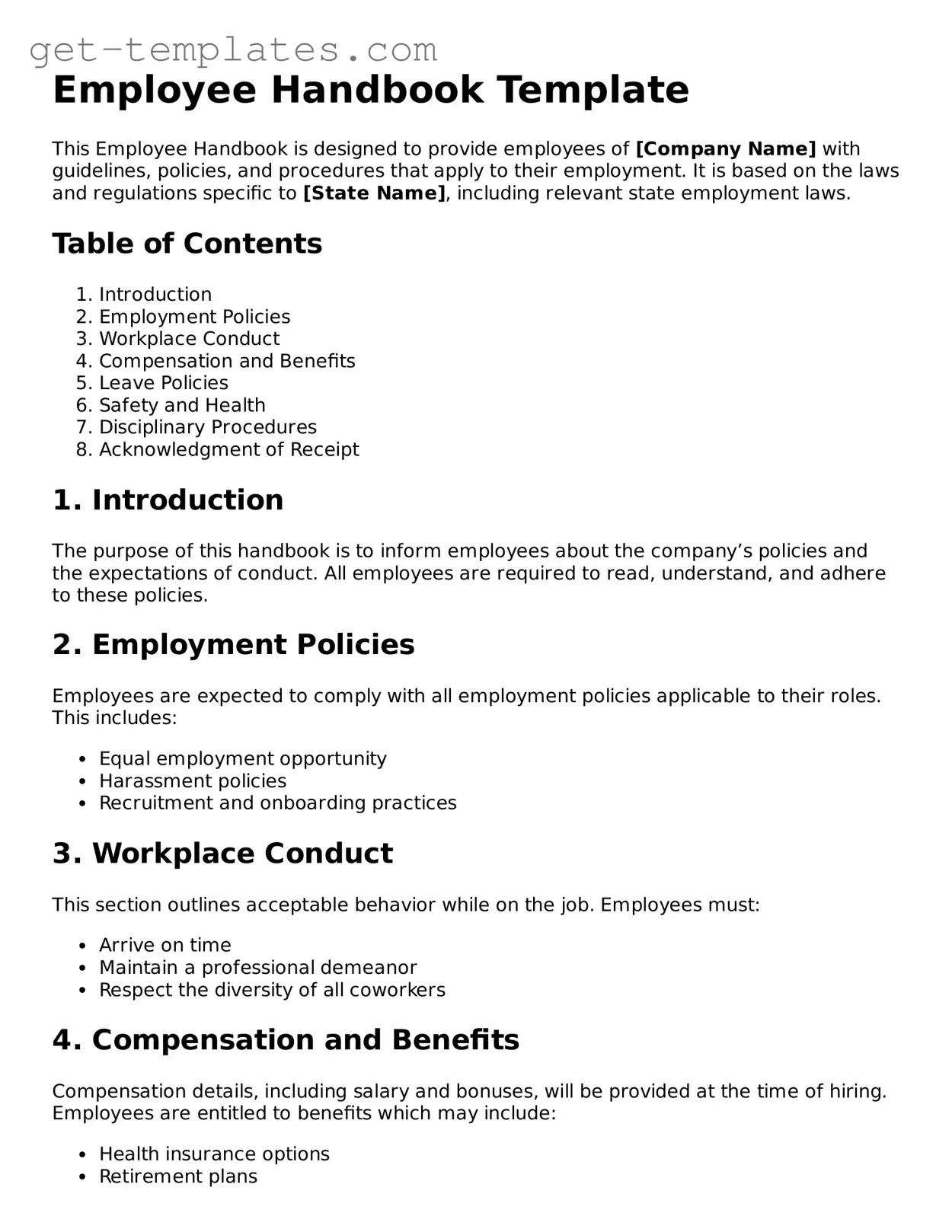Employee Handbook Template
This Employee Handbook is designed to provide employees of [Company Name] with guidelines, policies, and procedures that apply to their employment. It is based on the laws and regulations specific to [State Name], including relevant state employment laws.
Table of Contents
- Introduction
- Employment Policies
- Workplace Conduct
- Compensation and Benefits
- Leave Policies
- Safety and Health
- Disciplinary Procedures
- Acknowledgment of Receipt
1. Introduction
The purpose of this handbook is to inform employees about the company’s policies and the expectations of conduct. All employees are required to read, understand, and adhere to these policies.
2. Employment Policies
Employees are expected to comply with all employment policies applicable to their roles. This includes:
- Equal employment opportunity
- Harassment policies
- Recruitment and onboarding practices
3. Workplace Conduct
This section outlines acceptable behavior while on the job. Employees must:
- Arrive on time
- Maintain a professional demeanor
- Respect the diversity of all coworkers
4. Compensation and Benefits
Compensation details, including salary and bonuses, will be provided at the time of hiring. Employees are entitled to benefits which may include:
- Health insurance options
- Retirement plans
- Paid time off
5. Leave Policies
All leave requests must be submitted as per company policy. Types of leave may include:
- Sick leave
- Vacation leave
- Family and medical leave
6. Safety and Health
The company prioritizes the health and safety of all employees. Procedures and guidelines will be in place to ensure a safe work environment. Employees are expected to:
- Follow safety protocols
- Report unsafe conditions immediately
7. Disciplinary Procedures
Violations of company policies may result in disciplinary action. These actions may include:
- Verbal warning
- Written warning
- Termination
8. Acknowledgment of Receipt
Every employee is required to sign an acknowledgment form indicating they have received, read, and understood the Employee Handbook. A copy of this signed form must be returned to the Human Resources department.
For questions regarding the contents of this handbook, please contact [Contact Name], [Position], at [Contact Information].
